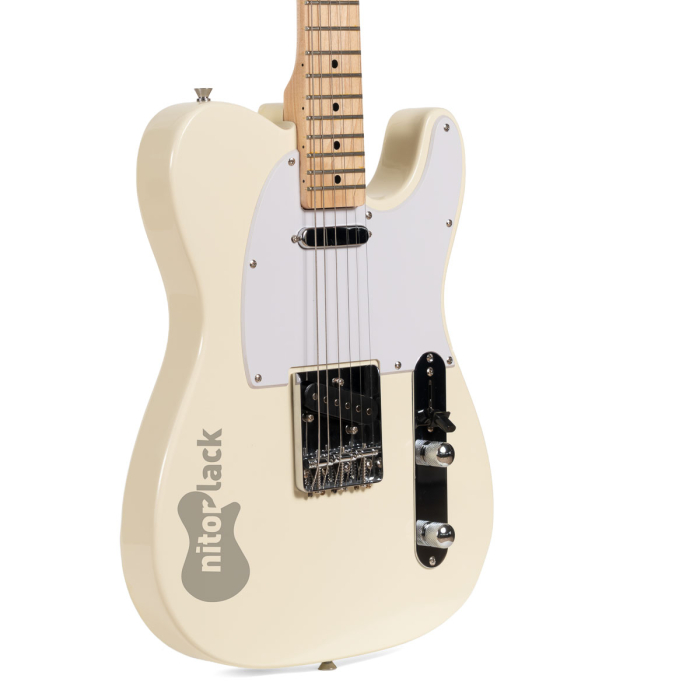Our vintage-inspired colors
Nitorlack colors are based on the original Fender and Gibson colors. The creation of these colors is preceded by a great work and exhaustive study by our laboratory and technical department. Thanks to this, we have been able to recreate with fidelity the tones of the Fender and Gibson guitars from the 50’s and 60’s.
During those years up to the present day it should be noted that the colors of vintage guitars have changed a lot over the years due to the aging of the nitrocellulose lacquer and modifications in the colors of the brands.
Therefore, two guitars finished in 1960 with fender colors may be totally different from each other or from a more current guitar.

Application guide:
- We begin to apply the color once the guitar has been primed with Nitorlack Primer.
- When we start the painting work, the pores should be closed and the grain should not be marked.
- We apply the product either by spray or spray gun at a distance of 25 cm.
- When applying we must follow an application pattern, first horizontally and then vertically, applying the paint uniformly.
- We apply several coats, letting dry between them about 24 hours and sanding between them, to remove any remaining impurities.
- This work will be finished when the surface is completely smooth and without imperfections.
Frequently Asked Questions:
How many sprays do I need to varnish a guitar?
– If the surface is well covered and it is not your first painting project, you will be able to do it with a spray, although you will not apply many coats. However if you are not an expert we recommend using 2 sprays for an optimal finish.
What temperature should the guitar be at during and after the process?
– It is recommended to do it in a place whose temperature is between 15 and 25 degrees. If the painting or varnishing process is done in very hot or cold conditions, the final result may not be good.
Where should I carry out the process?
A clean site will be essential to prevent dirt or dust particles from adhering to the surface.
Is sanding between coats mandatory?
It is not something you should always do, but it is advisable to remove any imperfections that remain in the paint at the end of each coat, as well as any particles that may adhere.



















Marco M. (verified owner) –
Mi è piaciuto il tono della tinta, però per l’uso che ne ho dovuto fare l’ho reso più scuro con il Vintage White Fender, che è piuttosto più scuro.
CARLOS GARCIA (verified owner) –
Pierre Guitarservice ApS – Dubre (verified owner) –
Excelent..! best product ever.. 🙂
JOAO GODINHO (verified owner) –
Pieter Van Vaerenbergh (verified owner) –
Nice
Lynda Martin (verified owner) –
Vittorio Mazzotti (verified owner) –
Piero D. (verified owner) –
Tutto bene e in tempi brevi
Ermanno De Luchi (verified owner) –
Molto soddisfacente
Karim Boutayeb (verified owner) –
Excellent produit. Teinte parfaite. Appliquée au pistolet LVLP (@1.8 Bars), rendu impeccable !